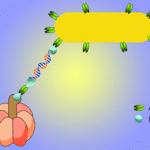Cancer Research

PRINCETON, New Jersey and PARIS, March 27 /PRNewswire/ --
- Laureate to Manufacture Cytheris' Lead Product Candidate, INTERLEUKIN-7, currently in clinical trials for treatment of HIV, HCV and cancer
Laureate Pharma, Inc., a full-service biopharmaceutical development and protein production company, announced today that it has entered into a cGMP contract manufacturing agreement with Cytheris SA, a clinical stage biopharmaceutical company focused on research and development of new therapies for immune modulation. According to the agreement, Laureate will manufacture Cytheris' lead product…

MILAN, Italy, March 27 /PRNewswire/ --
- Degarelix Suppressed Testosterone Within Three Days in 96% of Patients
Data from a Phase III study presented at the 23rd Annual European Association of Urology Congress demonstrated that the investigational GnRH blocker, degarelix, produced a significant reduction in levels of testosterone (1),(2) within three days in more than 96% of study patients.(2)
The new data show that degarelix provided an extremely fast effect on testosterone levels, close to the immediate effect achieved with surgery (orchidectomy).(2),(3)
The phase III study compared…

PLANEGG-MARTINSRIED, Germany, March 27 /PRNewswire/ -- 4SC AG (Frankfurt, Prime Standard: VSC) reports today on the financial result of the financial year 2007. Revenues during the reporting period amounted to 1.376 million Euros and fell short 62.4 per cent of the revenues achieved for the same period in 2006 (3.664 million Euros). In the previous year, the "Drug Discovery and Development" segment alone contributed almost half of overall revenues with 1.683 million Euros as a result of the successful sale of the world-wide exclusive rights to the QSB substances. In 2007 4SC AG did not…

The brain can sense the calories in food, independent of the taste mechanism, researchers have found in studies with mice. Their finding that the brain’s reward system is switched on by this “sixth sense” machinery could have implications for understanding the causes of obesity.
For example, the findings suggest why high-fructose corn syrup, widely used as a sweetener in foods, might contribute to obesity.
In their experiments, Ivan de Araujo and colleagues genetically altered mice to make them “sweet-blind,” lacking a key component of taste receptor cells that enabled them to detect the…

Roughly a half-millimeter in size and commonly observed under microscopes in high-school biology classes, bdelloid rotifers are highly unusual in several regards: They appear to be exclusively asexual, have relatively few transposable genes, and can survive and reproduce after complete desiccation at any stage of their life cycle.
Scientists at Harvard University hypothesize that this last property explains something new about bdelloids - their apparently unique resistance to radiation.
Bdelloid rotifers. Credit: Diego Fontaneto
A new study shows bdelloid rotifers are extraordinarily…

One day soon patients may spit in a cup, instead of bracing for a needle prick, when being tested for cancer, heart disease or diabetes.
A major step in that direction is the cataloguing of the “complete” salivary proteome, a set of proteins in human ductal saliva, identified by a consortium of three research teams, according to an article published today in the Journal of Proteome Research. Replacing blood draws with saliva tests promises to make disease diagnosis, as well as the tracking of treatment efficacy, less invasive and costly.
Saliva proteomics and diagnostics is part of a…

In the near future a bio-sensing nano-device developed by Arizona State University researcher Wayne Frasch could eliminate long lines at airport security checkpoints and revolutionize health screenings for diseases like anthrax, cancer and antibiotic resistant Staphylococcus aureus (MRSA) - and it will all happen with the world’s tiniest rotary motor.
Frasch works with the enzyme F1-adenosine triphosphatase, better known as F1- ATPase. This enzyme, only 10 to 12 nanometers in diameter, has an axle that spins and produces torque. This tiny wonder is part of a complex of proteins key to…

In research that could lead to the prevention of up to one-fifth of birth defects in humans caused by genetic mutations, early stage fish embryos injected with a 'genetic patch' were able to develop normally.
Erik C. Madsen, Ph.D. student in the Medical Scientist Training Program at Washington University School of Medicine, made the discovery using a zebrafish model of Menkes disease, a rare, inherited disorder of copper metabolism caused by a mutation in the human version of the ATP7A gene. Zebrafish are vertebrates that develop similarly to humans, and their transparency allows researchers…

There are around 23,000 genes found in human DNA but perhaps 50 to 100 that have no counterparts in other species. Including the primate family known as hominoids increases that to several hundred unique genes.
If the genome is like an automobile, human-only genes are unlikely to be adding new wheels but they could, for example, be contributing a new anti-lock braking system: a regulatory function that fine-tunes essential processes originally established millennia ago in other species.
One hominoid-only gene, TBC1D3, can keep cellular growth factors active and helps turn on RAS, a protein…

When viruses enter cells they manufacture proteins to assist in growth and replication but the body’s immune system recognizes and attacks these non-native proteins. Human Papillomavirus (HPV)(1), which causes several types of cancer but is particularly associated with cervical cancer, has developed sneaky ways of hiding in the body, but researchers at the University of Leeds have found that its ability to trick the body’s first line of defence leaves it vulnerable to counter-espionage from a second defence system.
Professor Eric Blair(2) of the University’s Faculty of Biological Sciences…